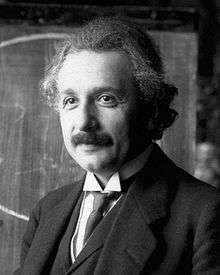Architect (role variant)
The Architect Rational is one of the 16 role variants of the Keirsey Temperament Sorter, a self-assessed personality questionnaire designed to help people better understand themselves. David Keirsey originally described the Architect role variant; however, a brief summary of the personality types described by Isabel Myers contributed to its development. Architects correlate primarily with the Myers-Briggs type INTP (also known as the logician). [1]
Overview
Architects are introspective, logical, rational, clear-headed, informative, and attentive. The scientific systemization of all knowledge, or architectonics, is highly developed in Architects, who are intensely curious and see the world as something to be understood. Their primary interest is to determine how things are structured, built, or configured. Architects are designers of theoretical systems and new technologies. Rearranging the environment to fit their design is a distant goal of Architects.
Architects are logically and verbally precise. In casual conversations, they may be tempted to point out errors other speakers make, with the simple goal of maintaining clarity within the exchange. In serious discussions, Architects' abilities to detect distinctions, inconsistencies, contradictions, and frame arguments give them an enormous advantage. In debates, Architects can be devastating, even to the point of alienation from the group with detailed logical arguments, which may be characterized as "hair-splitting."
Architects tend to analyze the world in depth. They prefer to quietly work alone and they may shut other people out if they are focused on analysis. This, coupled with the fact that Architects are often quiet, makes it difficult for other individuals to get to know them. In social exchanges, Architects' interest in informing others about what they have learned is greater than their interest in directing the actions of others.
Credentials or other forms of traditional authority do not impress Architects. Instead, logically coherent statements are the only things that seem to persuade them. Architects value intelligence highly and are often impatient with people with less ability than they have. An Architect often perceives themself as being one of the few individuals capable of defining the ends a society must achieve and will often strive to find the most efficient means to accomplish their ends. This perspective can make Architects seem arrogant to others.
Relationships
According to Rational Role Variants, by David Keirsey:
"Architects take their mating relationship seriously and are faithful and devoted - albeit preoccupied at times, and somewhat forgetful of appointments, anniversaries, and other common social rituals. They are not likely to welcome much social activity at home, nor will they arrange it, content to leave scheduling of social interactions to their mate. If left to their own devices, Architects will retreat into the world of books and emerge only when physical needs become imperative. Architects are, however, even-tempered, compliant, and easy to live with - that is, until their principles are violated, in which case their adaptability ceases altogether. They prefer to keep their desires and emotions to themselves, and may seem insensitive to the desires and emotions of others, an insensitivity that can puzzle and frustrate their mates. But if what their mates are feeling is a mystery to them, Architects are keenly aware of what their mates actually say and do, and will often ask their mates to give a rationale for their statements and actions."
Notable Architects

For illustrative purposes, Keirsey and his son, David M. Keirsey, have identified well-known individuals whose behavior is consistent with a specific type. Unless otherwise noted, the categorization of the individuals below, whether living or dead, as Architects is a matter of expert opinion rather than the result of actual testing of the named individual.
See also
References
External links
- Keirsey Temperament and Character The Web Site for the Keirsey Temperament Sorter and Keirsey Temperament Theory.
- The Architect Rational Portrait of the Architect Rational